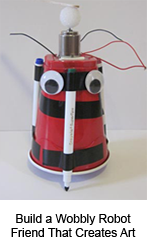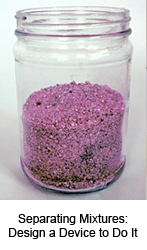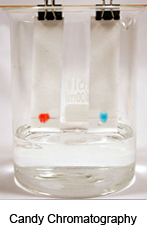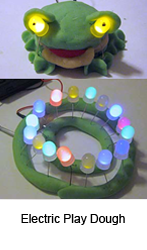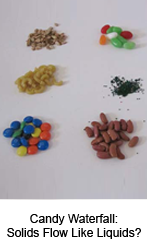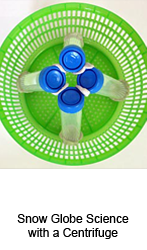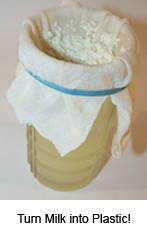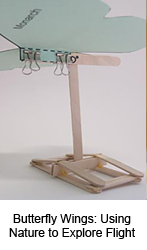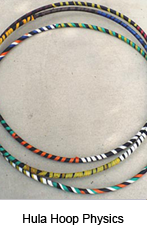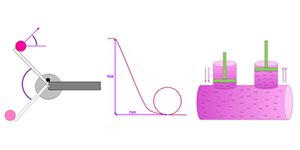Exciting Girls about Science and Engineering
With its broad spectrum of free scientist-authored projects for K-12 students, Science Buddies wants ALL students to have a great science project experience—girls and boys. For teachers and parents looking for ways to engage girls in science, Science Buddies has plenty of suggestions. Finding a great project that taps an area of interest is one of the most important things to keep in mind when helping students select projects.
Girls and STEM: Better Understanding the 'Leaky Pipeline'
With support from Motorola Solutions Foundation, TrueChild is digging into issues related to STEM, gender, race, and ethnicity. See their STEM white paper report "Do Internalized Feminine Norms Depress Girls' STEM Attitudes & Participation?" for a summary of what's at stake, what's happening, and what TrueChild is learning from focus group studies they are conducting. According to TrueChild's research, girls may feel they have to choose between "femininity and STEM." See TrueChild's "Femininity & Science, Technology, Engineering, Math" section for links to other relevant studies and reports.
Understanding "why" girls lose interest in areas of science and changing the dynamic has become a top priority for many who are involved in science education and, ultimately, ensuring a healthy pipeline between formative school years and the emerging job force.
Why Not Science?
The problem of "girls bailing on science" is not one with immediate and concrete answers as the convergence of a number of factors has likely contributed to what has become a broad-spectrum problem. There are no easy answers, but there are myriad steps that may help encourage and recoup female student interest. Increasing the visibility of female role models in science and in fields like robotics, engineering, and computer science, fields often associated with males, is certainly important. Girls looking to those fields need to find plenty of examples of female scientists to help them better envision both the field and their own potential place in such a field of work and study. Ensuring girls have access to (and encouragement for) a wide range of science-related opportunities both in school and through extracurricular and after-school activities is also important. Making clear to all students, through presentation, through teaching, through example, and through at-home discussion, that there are no "boy" and "girl" fields of science is a must. The stereotypes that surround certain fields of science, and the ways in which developing students respond to those stereotypes, may have much to do with the kinds of projects girls choose for their science class and science fair assignments.
These are all important steps, but they are only individual strands that feed into a complicated and multi-headed problem. No single approach can realign girls' perception of science, and change won't happen overnight. Rebalancing STEM so that girls see these fields as interesting, exciting, and viable, as relevant and possible for them, may take the proverbial village, but it also is going to take a lot of diligent and hard work on the part of teachers, parents, community members, and volunteers who are all committed to getting girls excited about science and to helping girls see that they, too, can be scientists and that there are many, many different areas of science to explore.
Finding a Science Project
So how do you get a girl student engaged in a hands-on science assignment, project, or activity? What project should you encourage? What project should she pick? The answer may be more simple than you think. She should pick a project that interests her or that taps into an area of interest.
At Science Buddies, we believe that all students, male or female, can perform any of the Project Ideas in our library of more than 1,200 free science projects when the project is appropriate for the student in terms of difficulty and available time. This is especially true if the project is one in which a student is interested.
A Project She will Love
This focus on the importance of student interest is the foundation on which Science Buddies' Topic Selection Wizard operates. After a student responds to statements about his or her interests in the Wizard's survey, projects that best fit the student's existing interests rise to the top as recommendations for projects the student may most enjoy. This does not mean there are not other projects that the student might find satisfying, challenging, and exciting. But students who use the Topic Selection Wizard are more likely to uncover and discover projects that really mesh with their interests—even in areas of science they may not have considered but that fit in, nicely, with an interest or hobby. We always encourage students to try the Topic Selection Wizard as a first step in locating a science project.
Some girls, of course, will gravitate to Project Ideas that center around subjects and topics that may typically be associated with girls. That's fine! Science Buddies offers a broad range of projects and experiments that meet that need. But many female students, based on their individual areas of interest, will find exciting and challenging projects that may capitalize upon their interests and skills and may open up areas of science, technology, engineering, or math that are unexpected or new to them but that they will really enjoy.
A Handy List of Girl-friendly Science Projects
We could post a list of projects that we know from experience are especially easy for girls to see and choose, but we feel strongly that in order to help change the dynamic, we want, always, to support the fact that the awesome new projects we are developing at Science Buddies are put together by our team of scientists to encourage an amazing science experience for a student—regardless of whether the student is male or female. Here are a few of our recently released Project Ideas that we think are super fun, exciting, creative, and have the potential to empower both girls and boys to further explore science and engineering.
The Project Ideas shown above are just a tiny sampling of the wide range of projects students will find at Science Buddies (more than 1,200 projects in more than 30 areas of science). We encourage teachers and parents to have students first try the Topic Selection Wizard. (Sit with your student and look through the results together!) If a student is still uncertain about which project to choose, spend time looking though the library of Project Ideas, starting first with an area of science in which the student seems interested.
Supporting the Process
Parents and teachers play a critical role in how girls perceive and respond to science. Making science a part of the daily car ride or family dinner is an easy but important way to show girls that science matters and is relevant to them. We suggest parents and educators review the following resources, success stories, science history notes, and book reviews for additional encouragement and support in helping engage girls of all ages in science:
- Encouraging and Inspiring Female Student Engineers (book review)
- Calling Naturalists of All Ages: Citizen Science Projects for the Whole Family (book review and family science)
- Girls at After-school Program Science Event Explore Paper Airplanes (success story)
- Girls Explore Engineering with Marble Run Challenge (success story)
- A Picture Book Look at the Engineering Spirit (book review)
- Science History: Mary Anning (science history)
- Science in a Flash: Turn Milk into Plastic! (slumber party success story)
- Artificial Intelligence and Cancer Diagnosis: Meet the 2012 Google Science Fair Winner (success story)
- Parent Perspective: Understanding Your Role in Your Student's Science Project
- Playful Programming and Cool Code: From Tech User to Tech Creator
- Family Dinner: Serving Up Science
- Science Projects for Girl Scouts
- Building Bristlebots: Basic Toothbrush Robotics (family robotics!)
- Electronics and Play Dough: Fun, Tactile Family Science (family electronics!)
Keep in mind, too, that how parents talk about and respond to issues of science, technology, engineering, and math has an impact on students. There are many, many ways you can do hands-on science with your kids at home, after school, or on the weekends even if you are not a scientist. Family science should be fun! We highlight a family-friendly science activity every Thursday on the Science Buddies Blog. But we also frequently post stories of families who have tackled various kinds of science projects, including math, electronics, and robotics—with no prior experience!
Categories:
You Might Also Enjoy These Related Posts:
- 15 STEM Gifts & Science Kits You'll Feel Good About Giving
- 13 Boat Science and Submarine Science Projects and Experiments
- July 4th STEM! Summer Science Picks for Independence Day!
- 12 Science Kits for Summer Science Experiments and Discovery
- 15 Science Projects to Make and Give for Father's Day
- Ready, Set, Go! (Awesome Summer Science Experiments)
- Awesome Summer Science Experiments
- 10 STEM Activities with Cardboard Tubes



